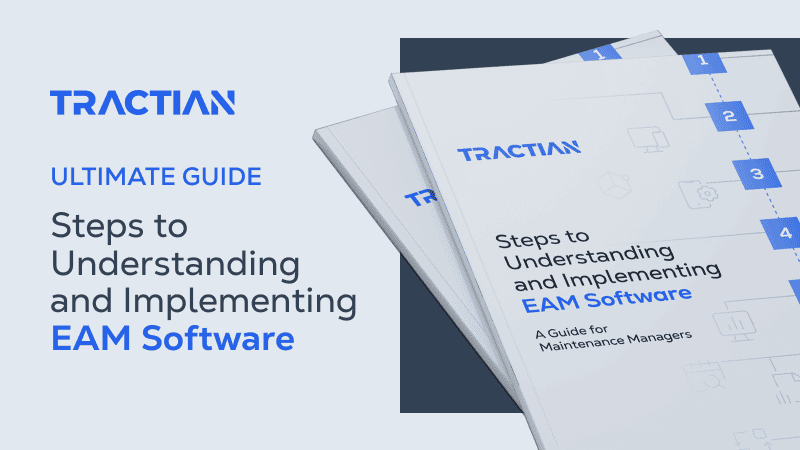You’re on the clock, and a critical machine just went down. Every minute of downtime is eating into your production targets.
You call your team to swap out a simple part, which should be a quick fix. But the spare part is nowhere to be found. You can only imagine that the tool you need is likely buried under weeks of clutter in the maintenance room.
Now, what should’ve been a 10-minute job has become an irritating hunt through disorganized shelves, misplaced tools, and a workspace that feels more like a maze than a maintenance hub. And it’s doubly frustrating because you’ve only recently realized how expensive this level of disorganization is. The company is losing tens of thousands of dollars just because a cheap, inexpensive part can’t be found.
Does this sound familiar? Unfortunately, this kind of chaos happens more often than most teams would like to admit.
Disorganization and lack of standards don’t just slow you down. They cost money, pose safety risks, and erode productivity in the long run.
These types of situations led to the development of the 5S Method.
It’s a simple yet powerful approach to organizing workspaces, boosting efficiency, and making sure teams spend less time searching and more time doing.
In this article, we’ll show you what 5S is all about, why it’s been a game-changer for industrial environments, and how you can start applying it to transform the way your facility operates.
What Is The 5S Method?
The 5S Method is a lean manufacturing tool that helps teams organize, clean, and standardize their workspaces to improve productivity, safety, cleanliness, output quality, and team morale.
It’s based on five Japanese principles of workplace organization: Sort, Straighten, Shine, Standardize, and Sustain. They provide guidance for a straightforward, repeatable process for creating order in any industrial environment.
While it’s often casually discussed as a way to “tidy up,” 5S is far more than that when implemented in a company. It lays the groundwork for continuous improvement by making it easier to spot issues, prevent downtime, and eliminate waste before it impacts production.
5S applies to a multitude of industrial situations, whether you’re managing a high-speed production line or a tight-turnaround maintenance shop. 5S helps teams stay focused and avoid the hidden costs that come with disorganization, such as unnecessary downtime.
In the next section, we’ll take a closer look at the origins of this method and why it has withstood the test of time in industrial settings.
Origins of the 5S Method
The 5S Methodology was developed by Toyota of Japan in the early days of its Lean Manufacturing System.
At the time, 5S became a core principle for eliminating waste and creating a culture of continuous improvement.
In a post-war economy, resources were limited, so maximizing productivity with minimal waste was critical for survival.
Toyota’s team recognized that a clean, organized, and standardized workspace could have a direct impact on performance, safety, and quality. In addition, such philosophies were already instilled in their culture and, therefore, readily accessible and adaptable. Acceptance was a low hurdle under these conditions.
And, what started as a simple system to keep tools and materials in order quickly evolved into a global best practice. Today, following the phenomenal success of Japanese auto manufacturers, industries around the world utilize 5S to drive operational excellence.
It’s proof that sometimes (if not most of the time), the simplest ideas create the strongest foundations.
Understanding the 5S Methodology
Now that you know where it comes from, let’s break down how the 5S methodology actually works.
The strength of the 5S Method lies in its systematic approach. Each of the five steps builds on the other, creating a cycle that drives efficiency, safety, and operational discipline every day.
Here’s a quick look at what each "S" stands for:
- Sort (Seiri): Eliminate what you don’t need.
- Straighten (Seiton): Arrange what’s necessary for easy access.
- Shine (Seisou): Clean and inspect your workspace regularly.
- Standardize (Seiketsu): Create consistent practices to maintain order.
- Sustain (Shitsuke): Build habits and discipline to keep improving.
In the next sections, we’ll break down each step, showing you how to put 5S into action on your factory floor and the real-world benefits you’ll see from day one.
1. Sort (Seiri)
The first step in 5S is Sort.
Seiri is about taking a hard look at your workspace and removing anything that doesn’t serve a clear purpose.
Tools, parts, materials, and equipment that are not needed for daily operations shouldn’t be present. Sorting requires a strict focus on what is needed during daily routines.
Think of it as clearing the noise so your team can focus on what really matters.
Why Sorting Matters
Over time, every factory or maintenance shop collects clutter. Spare parts from old projects, broken tools waiting to be "fixed someday," or materials kept around just in case.
All that unnecessary stuff gets in the way, literally and operationally. It leads to longer search times, crowded work areas, and even safety hazards.
By sorting, you:
- Free up valuable space.
- Reduce time wasted looking for the right tools.
- Eliminate confusion about what’s usable and what’s not.
How to Implement Sort
Start with a Red Tagging process.
Identify everything in your workspace that isn’t used regularly. Tag items that are questionable or that you’re unsure about keeping. Set them aside in a designated holding area.
If no one needs those items within a set timeframe (say, 30 days), it’s time to remove them. That can mean relocating, recycling, or actually discarding.
The goal is simple: Only keep what adds value to daily operations.
Once you’ve sorted the workspace, your team will notice the difference immediately. Less clutter means faster work, fewer mistakes, and a safer environment.
2. Straighten (Seiton)
Once you’ve cleared out what you don’t need, it’s time to organize what’s left. That’s where Straighten comes in.
Seiton is all about ensuring that every tool, part, and material has a designated spot, so it’s always where you need it, when you need it.
In short, “A place for everything, and everything in its place.”
Why Straightening Matters
Even with less clutter, disorganization can still slow you down. If your team spends precious minutes searching for a wrench or guessing where spare parts are stored, efficiency suffers.
Poor organization wastes time and leads to errors and frustration on the floor.
By applying Straighten, you:
- Reduce search time and streamline workflows.
- Improve safety by keeping pathways and workstations clear.
- Make it obvious when something is missing or out of place.
How to Implement Straighten
Start by analyzing workflows. Place tools and materials where they’re used most frequently. The goal is to minimize movement.
Use visual management tools like:
- Shadow boards for tools.
- Labeled shelves and bins for parts.
- Floor markings to define storage zones and pathways.
If someone unfamiliar with your workspace walks in, they should immediately understand where things belong. That’s when you know Straighten is working.
When everything’s in place, your team can focus on getting the job done, not on searching for equipment.
3. Shine (Seisou)
With everything sorted and organized, the next step is simple: keep it clean.
Shine isn’t just about making your workspace look good. It’s about creating a culture where cleanliness supports performance, safety, and reliability.
In industrial environments, dirt and dust hide problems, accelerate wear, and increase the risk of failures or accidents.
Why Shine Matters
When machines and work areas are clean, it’s easier to spot:
- Leaks, cracks, or unusual wear.
- Loose parts or potential hazards.
- Early signs of malfunction before they turn into downtime.
A clean workspace is also a safer workspace. Spills, debris, and clutter can quickly turn into safety incidents if left unchecked.
By implementing Shine, you:
- Extend equipment life through regular care.
- Improve safety by removing hazards.
- Build accountability: everyone takes ownership of their workspace.
How to Implement Shine
The key is to make cleaning part of the job, instead of a separate, additional task.
Assign daily or weekly cleaning routines tied to inspection checklists. This doesn’t mean only calling in janitorial services. The intent is for operators and technicians to stay familiar with their equipment and environment.
Use visual cues to maintain standards:
- Post cleaning schedules at each station.
- Define what "clean" looks like for specific areas or machines.
- Ensure cleaning tools are easily accessible and properly stored.
When Shine is done right, cleaning becomes an inspection opportunity. It keeps machines running smoothly and helps catch minor issues before they grow.
4. Standardize (Seiketsu)
With your workspace now organized and clean, the next challenge is to faithfully adhere to the first three practices: Sort, Straighten, and Shine.
Standardization is the stage that turns your progress into routines and keeps them from fading over time. It’s about creating clear, consistent procedures so that every task is repeated the same way every day.
Why Standardization Matters
Without standardization, teams rely on memory or personal habits. If your team operates under the philosophy that “everyone has their own way,” then shortcuts occur, tools get misplaced, and cleaning routines are often skipped.
Disorganization slowly creeps back in (which is why you started 5S in the first place), and miscommunication between shifts becomes common again. Efficiency and safety start to decline.
By applying Standardize, you:
- Ensure everyone follows the same best practices.
- Maintain the gains made in the first three steps.
- Make training easier for new team members.
How to Implement Standardization
Document the procedures that worked during Sort, Straighten, and Shine, but keep it simple. No one wants to read a manual every morning.
Make sure to use:
- Checklists for daily tasks.
- Visual guides showing how areas should look.
- Standard operating procedures (SOPs) are posted where work happens.
Here, leverage technology where possible. A CMMS can automate reminders for cleaning schedules, inspections, and routine tasks, ensuring nothing gets forgotten, even on busy days.
5. Sustain (Shitsuke)
The hardest part of 5S isn’t getting started, it’s keeping it going.
Sustain means building a culture where organization, cleanliness, and standards become habits.
Shitsuke ensures that 5S doesn’t fade after a few weeks, but becomes part of how your team operates every day.
Why Sustaining Matters
Even the best systems fall apart without discipline. Sustain keeps that from happening by reinforcing accountability and continuous improvement. It’s what turns 5S from a one-time initiative into a long-term driver of efficiency and safety.
How to Implement Sustain
Consistency is key. Regular audits, team check-ins, and leadership support make sure everyone stays aligned.
Encourage your team to take ownership of their areas. When operators and technicians feel responsible for maintaining order, 5S becomes second nature, instead of a forced policy.
It also helps to celebrate small wins. Recognizing teams that keep their workspace in top shape reinforces positive behavior and keeps motivation high.
Lastly, don’t let 5S stagnate. Use it as a foundation for identifying new opportunities for improvement. The goal is progress, not perfection.
With all five steps in place, your facility is set up for more than just a cleaner workspace.
You’re creating a safer, more efficient environment where problems are easier to spot, downtime is reduced, and your team works smarter every day.
Benefits of Integrating 5S
When implemented correctly, 5S delivers measurable improvements in safety, efficiency, and overall operational performance.
Let’s break down some of the key benefits companies experience when the 5S methodology becomes part of their daily routine:
Enhanced Safety and Reduced Hazards
Cluttered workspaces may look inefficient, but they can also be dangerous.
By removing unnecessary items, organizing tools, and keeping areas clean, 5S methods can significantly reduce the risk of accidents.
Clear pathways, properly stored equipment, and routine cleaning help prevent slips, trips, falls, and other common workplace hazards.
More importantly, 5S routines make it easier to spot issues
A clean, well-organized environment highlights leaks, wear, or equipment faults early, giving teams time to address them before small problems escalate into safety incidents.
Improved Workspace Efficiency
Every minute spent navigating clutter or figuring out which parts are usable is a minute lost in productivity.
With 5S techniques, everything your team needs is exactly where it should be. This streamlined setup reduces wasted motion, delays, and keeps workflows smooth.
Tasks get done faster because workers aren’t guessing or having to backtrack. When equipment is easier to access and materials are clearly labeled, processes flow smoothly without interruption.
Over time, these small efficiency gains add up to a significant boost in output and a noticeable drop in operational headaches.

Operational Excellence
By embedding discipline, consistency, and continuous improvement into daily routines, the 5S method creates a foundation for operational excellence.
Teams become more proactive, spotting inefficiencies and solving problems before they impact production.
It also supports lean initiatives and other efficiency-focused strategies by ensuring the workspace is always aligned with the best practices.
In short, the 5S approach transforms workplace culture. Maintaining high standards becomes part of everyone’s job, rather than a nagging management directive.
Common Challenges and Solutions
Implementing 5S techniques sounds simple. But keeping it alive on the factory floor is the real challenge.
Let’s look at how to overcome some common obstacles companies face.
Resistance to Change
It’s normal for teams to push back with a “We’ve always done it this way” mindset.
For example, a maintenance crew might resist reorganizing their tool area because they know where things are usually located. You can encounter pushback, even if this practice means wasting time daily. The resistance here is “change” itself, not whether the idea is good or not.
The fix is to start small and show quick wins. When teams see how much faster they can work with organized tools or clear pathways, they’ll get on board.
Leadership Not Leading
If managers don’t follow 5S principles themselves, the team won’t either. Ignoring clutter or skipping routines sends the message that 5S isn’t a priority.
Leaders must consistently set the example. A simple walkthrough, pointing out out-of-place items or praising well-maintained areas, reinforces that 5S is part of how the job gets done.

Unclear Responsibilities
In shared spaces, it’s easy for tasks to fall through the cracks. When everyone assumes someone else will handle cleaning or organizing, no one does.
Assign clear ownership for each area or task. Whether it’s a tool rack or a storage room, someone should be responsible for keeping it aligned with 5S standards.
Treating 5S as a One-Time Event
A common mistake is launching 5S enthusiastically, only to watch things slide back within weeks.
Without routines and follow-up, even the best-organized workspace will return to chaos.
The solution is to embed 5S into daily operations. Use checklists, regular audits, and simple reminders to maintain consistency. Remember: 5S isn’t a project, it’s a habit.
Integrating 5S with Maintenance Technologies
While 5S started long before digitalization, modern technology takes its impact to the next level.
Digital tools like a CMMS help teams sustain 5S practices by automating reminders and improving visibility. Digital tools make routine tasks easier to track and manage.
Sensor data and real-time condition monitoring can also support the Shine phase by detecting early signs of leaks, overheating, or abnormal vibrations-issues that a clean workspace makes easier to act on.
Even simple technologies, like digital labeling systems or mobile apps for audits, can reduce manual work and keep teams aligned with 5S standards.
By integrating these tools, companies move beyond reliance on memory or sticky notes. Technology ensures consistency and frees up time for teams to focus on higher-value tasks.
How Tractian's CMMS Optimizes 5S
A well-implemented 5S program requires visibility and control. And that’s precisely what a CMMS provides.
With the right system in place, teams can maintain 5S practices effortlessly, even in complex industrial environments. Here’s how a strong CMMS supports each step of the 5S method:
- Sort: Quickly identify which tools, parts, and materials are essential. A CMMS gives you full visibility over inventory and assets, helping eliminate unnecessary items from your workspace.
- Straighten: Organize digital records in a way that aligns with physical organization. Asset locations, maintenance histories, and spare parts are all easy to access, reducing time spent searching and keeping everything in order.
- Shine: Schedule recurring cleaning and inspection tasks. The CMMS automatically assigns responsibilities and sends alerts, so no routine is missed, even during peak workloads.
- Standardize: Store procedures, checklists, and visual standards in one centralized platform. This ensures that every team member follows the same process, regardless of the shift or site.
- Sustain: Monitor task completion, track compliance, and run audits with ease. The CMMS keeps teams accountable and ensures that your 5S efforts don’t fade over time.
By connecting daily operations with digital management, a CMMS transforms 5S from a manual effort into a reliable system that drives efficiency and organization.


